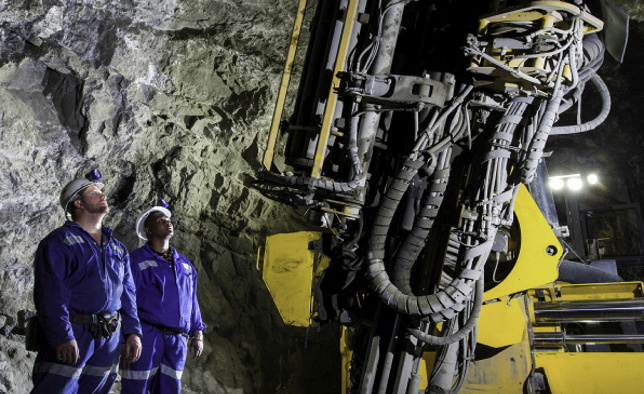
Rough-diamond demand was robust at this week’s De Beers sight despite the ongoing Covid-19 crisis in India, customers reported.
Manufacturers snapped up the limited supply in anticipation of rough shortages, sources told Rapaport News. Sales will still be 10% to 25% lower than the previous cycle in March because of reduced availability, they estimated. That translates to a sight value of $330 million to $400 million.
“People are buying from the miners and the big sources, thinking that there will probably be tenders that will be canceled,” a sightholder said. “There is the perceived idea that there’s going to be a shortage in certain goods. People are as eager to buy rough as they were four weeks ago.”
De Beers is not offering any ex-plan goods — those over and above customers’ prearranged allocations — the sources added. The miner has fewer diamonds available for clients after reducing its inventories during a strong first quarter for the rough trade, when it sold 13.5 million carats against production of 7.2 million carats. It has suffered operational difficulties at some of its Botswana deposits, exacerbated by a temporary shutdown at its Gahcho Kué mine in Canada.
“If De Beers offered 20% more [goods at the sight], I think the market would eat it up,” a rough-sector insider commented.
Less manufacturing
While India’s diamond and jewelry sector has received permission to operate during the country’s several coronavirus wave, manufacturing levels have slumped by between 10% and 50% in the past month. This has resulted from capacity restrictions and absenteeism, with smaller sizes seeing a sharper downturn.
Companies that manufacture larger goods operate in factories with more space for social distancing and are able to retain workers by offering higher pay, a sightholder explained. Many employees who produce smaller stones have left Surat and returned to their hometowns for health reasons.
“My production is down by a little less than 10%, but for people who are in smalls, their production has been severely hit, and is probably down by more than 30%,” said an executive at a large-stone manufacturer.
In line with this, the market for large rough has survived better than the small-stone segment, sources explained.
“Anything in [0.75 carats] or up, it’s in big demand,” a customer noted. “You can sell whatever you want.”
Meanwhile, polished demand has strengthened as companies anticipate lower availability alongside steady retail sales. A backlog at the Gemological Institute of America (GIA) has also affected the supply situation, with the turnaround time standing at around a month for the Mumbai laboratory and a little more in Surat.
“Due to the supply scarcity, people are stocking [up on] some of the goods, so demand is high, and will remain strong for a month or so,” another manufacturer said.
India’s virus outbreak has seen activity shift to other global centers. Many large manufacturers relocated their buying teams to Dubai before travel restrictions went into effect, enabling them to continue obtaining rough for their factories, reported Trans Atlantic Gem Sales (TAGS), a tender house located in the emirate.
New contract
De Beers’ weeklong May sight, its fourth of the year, began on Monday, featuring viewings in Dubai, Antwerp and Tel Aviv. The session is also the first under a new supply contract that came into effect on April 1.
The agreement sees the miner offer proportionately more goods to manufacturers rather than dealers in an effort to limit the reselling of boxes. Sightholders expected sluggish rough trading on the secondary market this month as a result.
Certain assortments have also changed, with 8-grainer (2-carat) rough now forming part of a category of larger stones ranging from 2 carats upward, sightholders noted. The size was previously in a 4- to 8-grainer (1- to 2-carat) box, which will now become 4- to 6-grainers (1 to 1.50 carats).
“This was focused both on responding to sightholders’ commercial needs and ensuring we have the most coherent offering for beneficiation customers,” a De Beers spokesperson said.
Customers forecast stable pricing at the sight following successive increases from December to February.
Source: DCLA





